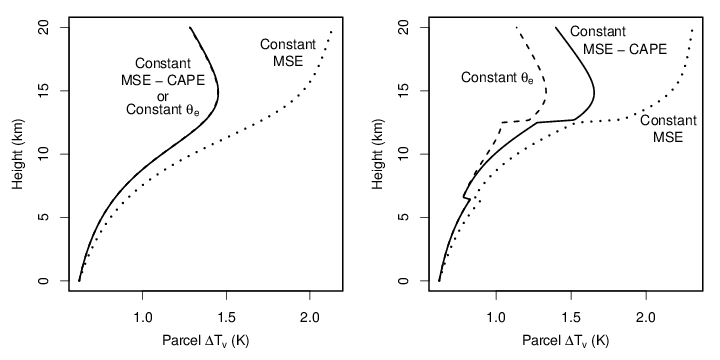Romps, MSE minus CAPE is the true conserved variable for an adiabatically lifted parcel, JAS, 2015
Paper
Description
One of the most fundamental and ubiquitous calculations in atmospheric science is the calculation of the properties of a cloud that rises vertically through the atmosphere. In fact, this calculation is performed thousands of times per day at weather centers around the world to quantify atmospheric instability and storm potential. It is also calculated many millions of times per day on supercomputers that are forecasting next week's weather and next century's climate. Despite the importance of this process, there is no agreement on how it should be calculated.
Three of the most common approaches are to use conservation of moist static energy (MSE), conservation of equivalent potential temperature, or conservation of entropy (the last two are actually the same). Here, it shown that none of these is the correct choice: their use can lead to temperature errors on the order of 1 K. While 1 K may not sound like a lot, that is the typical buoyancy of a convecting cloud. The correct conservation principle is MSE minus CAPE, where CAPE is the parcel's convective available potential energy.
Profiles of parcel buoyancy expressed as a virtual temperature anomaly for a parcel lifted adiabatically with (left) an equilibrium isothermal mixed-phase layer and (right) a more realistic disequilibrium mixed-phase layer.
